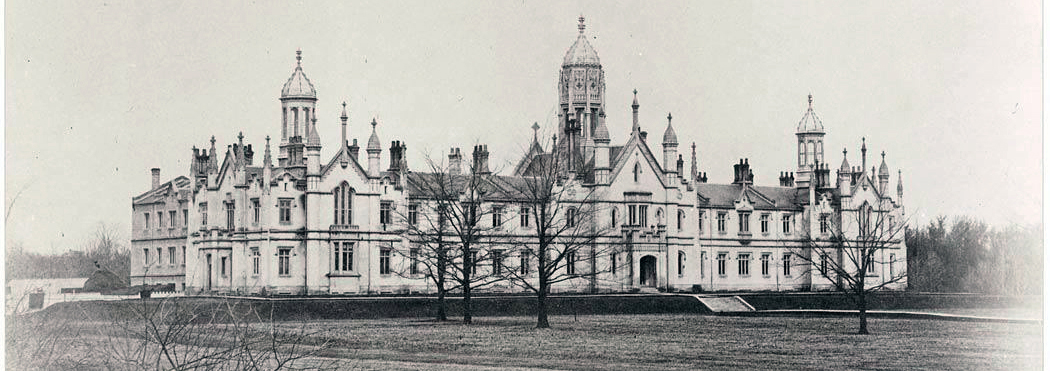

Trinity College was founded in 1851 by John Strachan, the first Anglican Bishop of Toronto. The doors of the original Trinity College building on Queen Street West opened on January 15, 1852. The first woman student was admitted in 1884, and four years later Trinity established St. Hilda’s College for women, putting Trinity at the forefront of the movement for higher education for women.
Trinity played an important role in the intellectual, social, and religious life of the region as an independent university until 1904, conferring degrees in seven faculties – Arts, Divinity, Medicine, Law, Music, Dentistry, and Pharmacy. In 1904, Trinity federated with the University of Toronto and became part of what is now known as the Faculty of Arts & Science. Trinity ceased to give instruction in faculties other than Arts and Divinity. Under the terms of the federation agreement, degrees in Arts are conferred by the University of Toronto. After 1904, the College has continued to exercise the rights of an independent university with respect to its Faculty of Divinity. Trinity provides for the instruction of its theological students, and confers its own degrees in theology.
Though part of the University of Toronto, Trinity College has retained its distinctive character and independent features, including its charter, governing bodies, administration, budget and endowment. Trinity College moved to the St. George campus in 1925, occupying a choice location (6 Hoskin Avenue) close to the other colleges, libraries and teaching departments of the university.